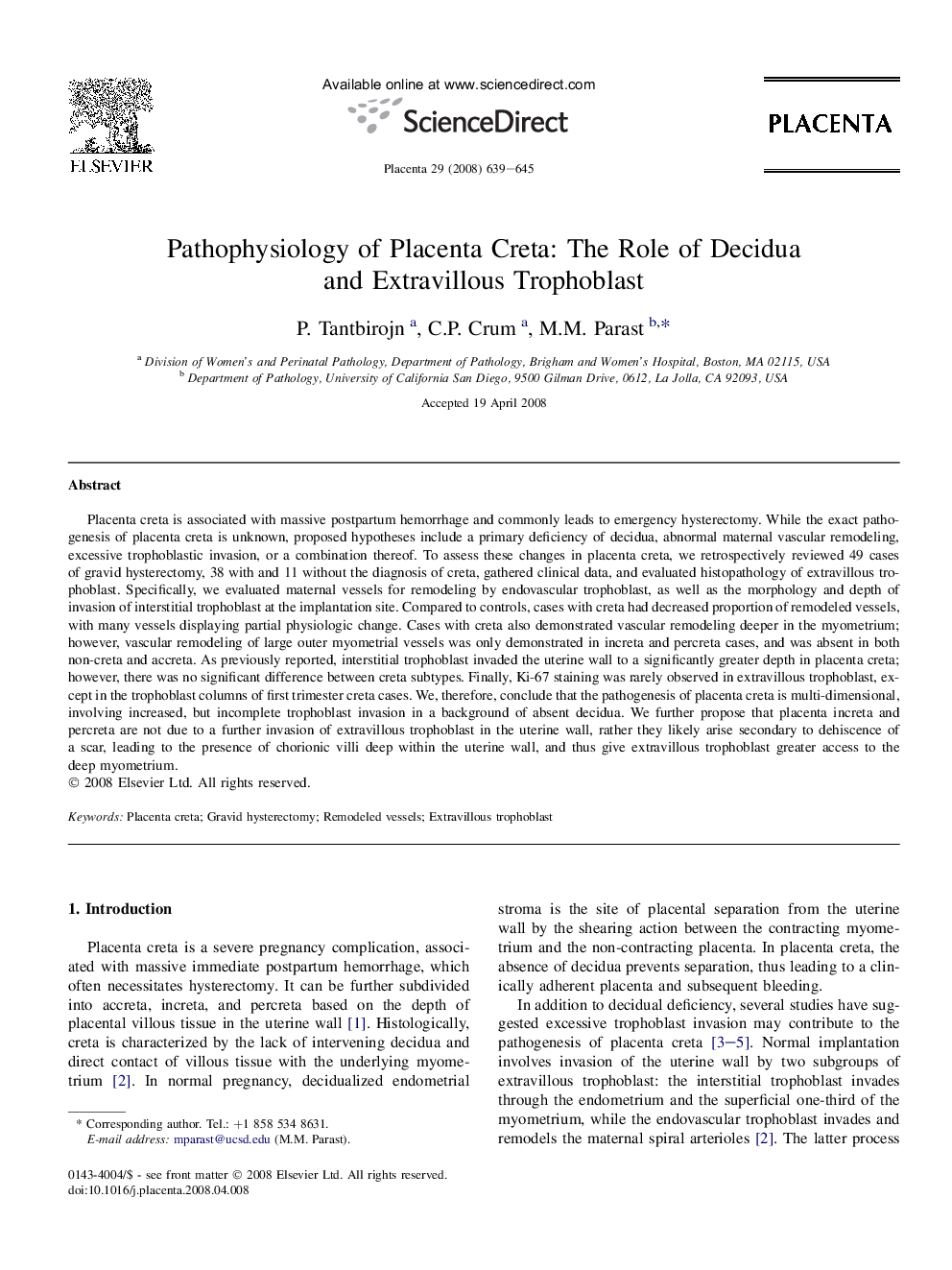| Article ID | Journal | Published Year | Pages | File Type |
|---|---|---|---|---|
| 2789693 | Placenta | 2008 | 7 Pages |
Placenta creta is associated with massive postpartum hemorrhage and commonly leads to emergency hysterectomy. While the exact pathogenesis of placenta creta is unknown, proposed hypotheses include a primary deficiency of decidua, abnormal maternal vascular remodeling, excessive trophoblastic invasion, or a combination thereof. To assess these changes in placenta creta, we retrospectively reviewed 49 cases of gravid hysterectomy, 38 with and 11 without the diagnosis of creta, gathered clinical data, and evaluated histopathology of extravillous trophoblast. Specifically, we evaluated maternal vessels for remodeling by endovascular trophoblast, as well as the morphology and depth of invasion of interstitial trophoblast at the implantation site. Compared to controls, cases with creta had decreased proportion of remodeled vessels, with many vessels displaying partial physiologic change. Cases with creta also demonstrated vascular remodeling deeper in the myometrium; however, vascular remodeling of large outer myometrial vessels was only demonstrated in increta and percreta cases, and was absent in both non-creta and accreta. As previously reported, interstitial trophoblast invaded the uterine wall to a significantly greater depth in placenta creta; however, there was no significant difference between creta subtypes. Finally, Ki-67 staining was rarely observed in extravillous trophoblast, except in the trophoblast columns of first trimester creta cases. We, therefore, conclude that the pathogenesis of placenta creta is multi-dimensional, involving increased, but incomplete trophoblast invasion in a background of absent decidua. We further propose that placenta increta and percreta are not due to a further invasion of extravillous trophoblast in the uterine wall, rather they likely arise secondary to dehiscence of a scar, leading to the presence of chorionic villi deep within the uterine wall, and thus give extravillous trophoblast greater access to the deep myometrium.
